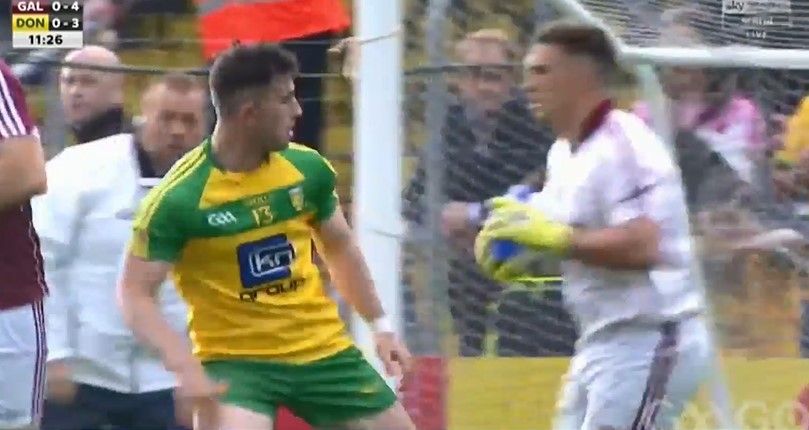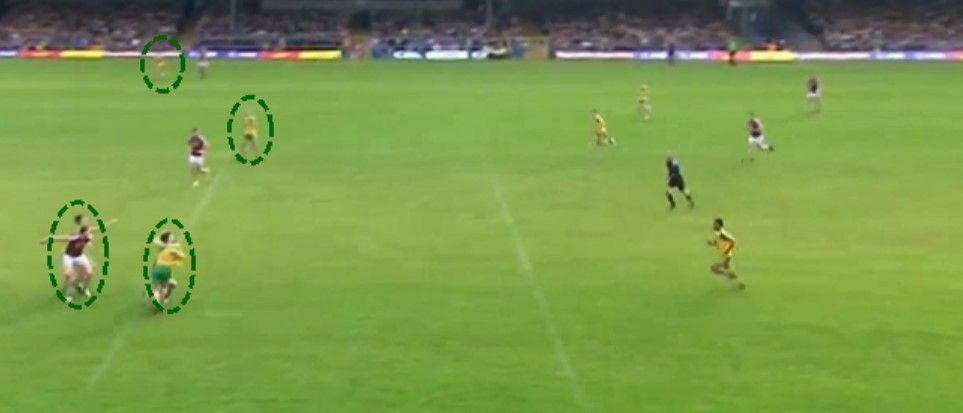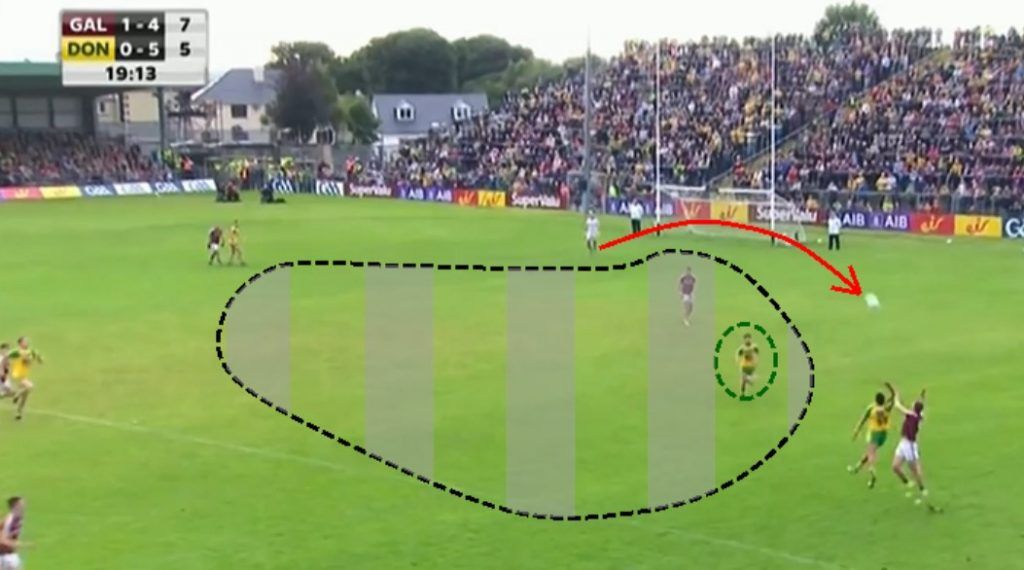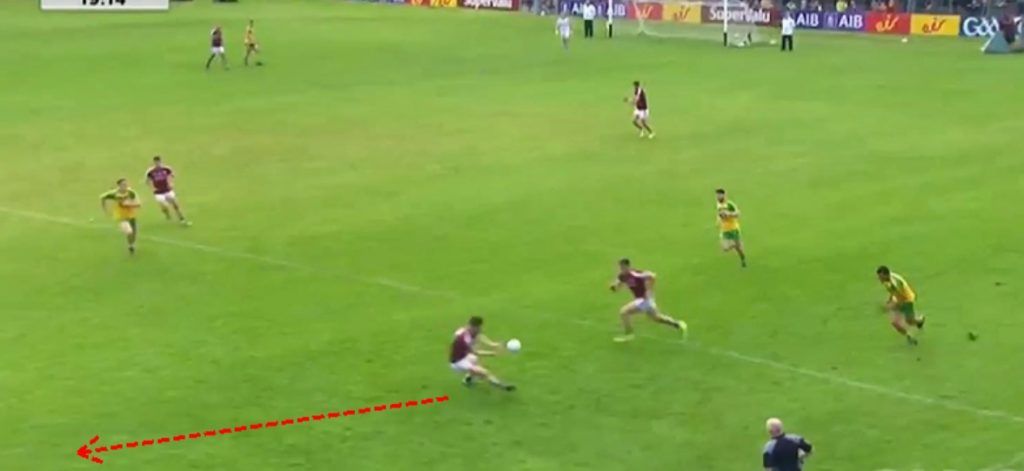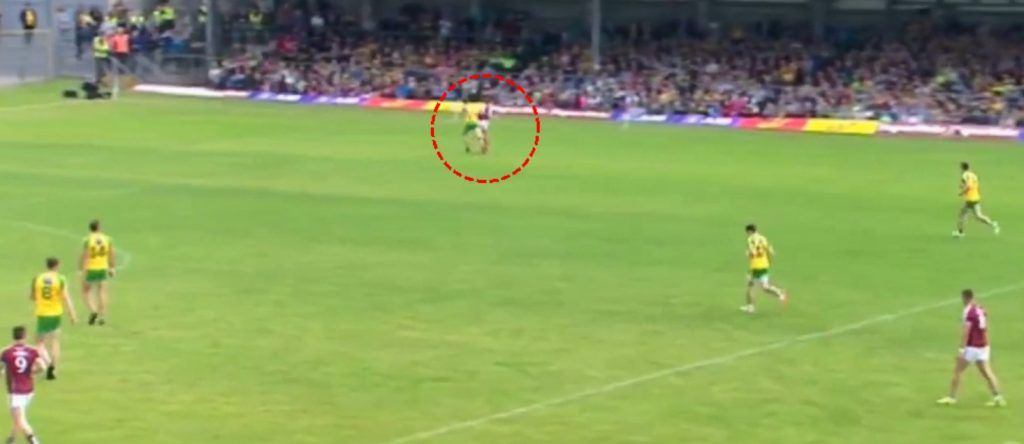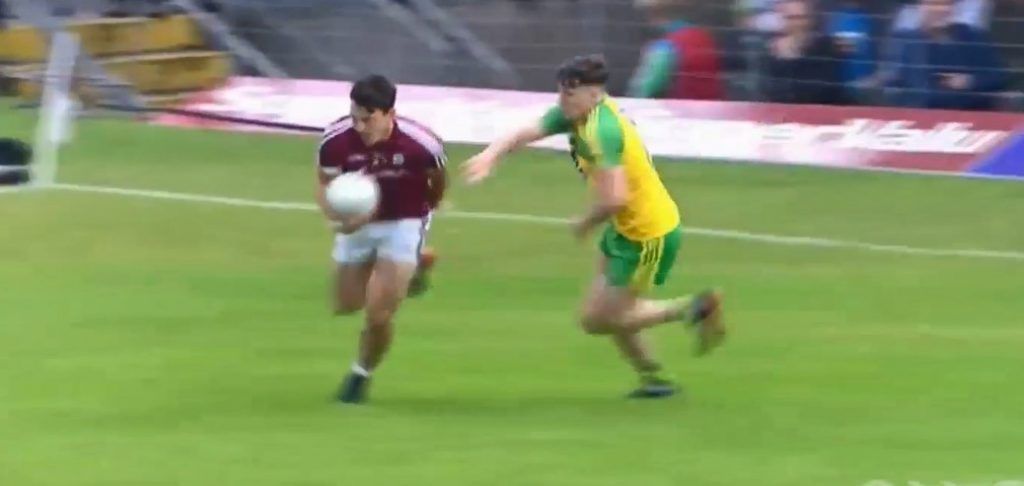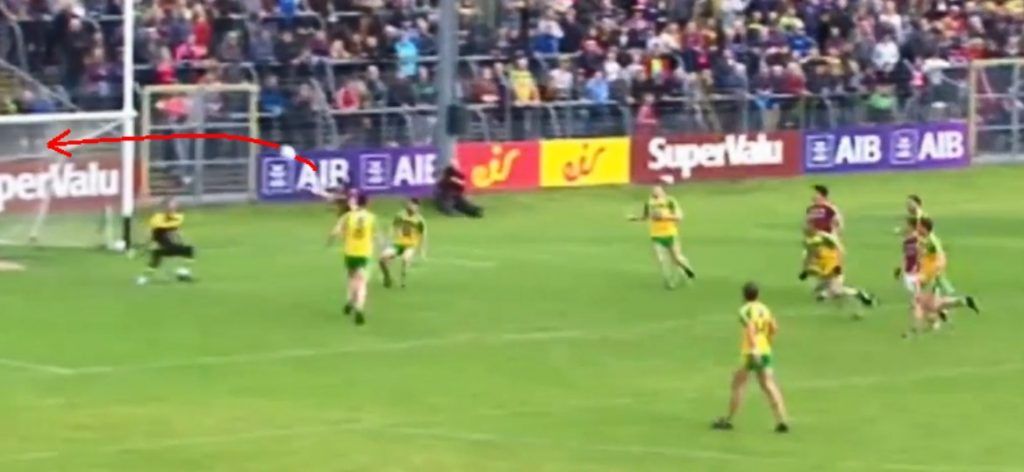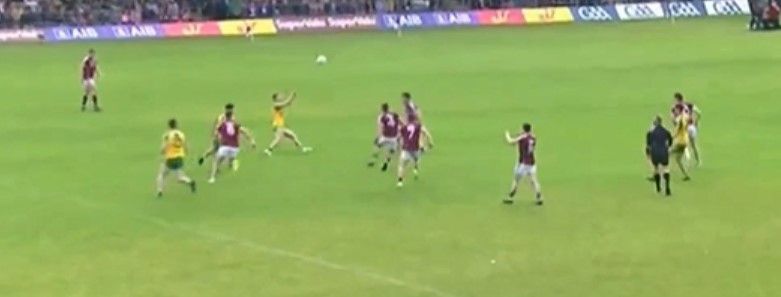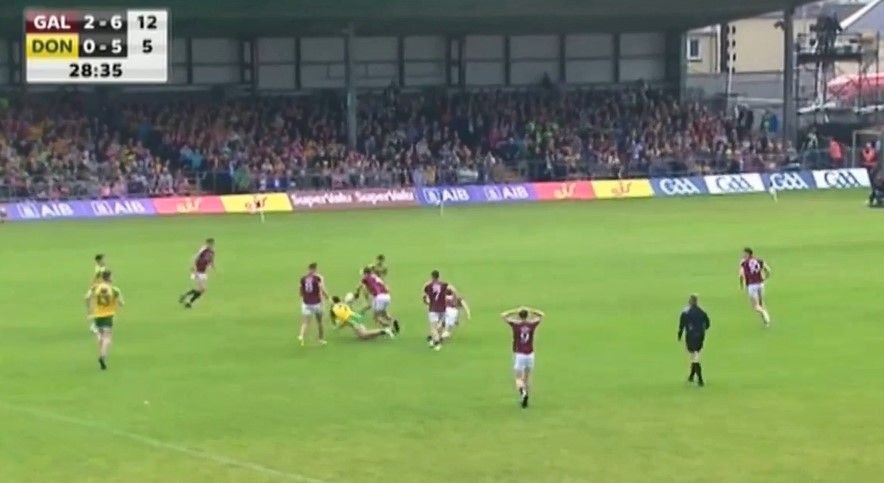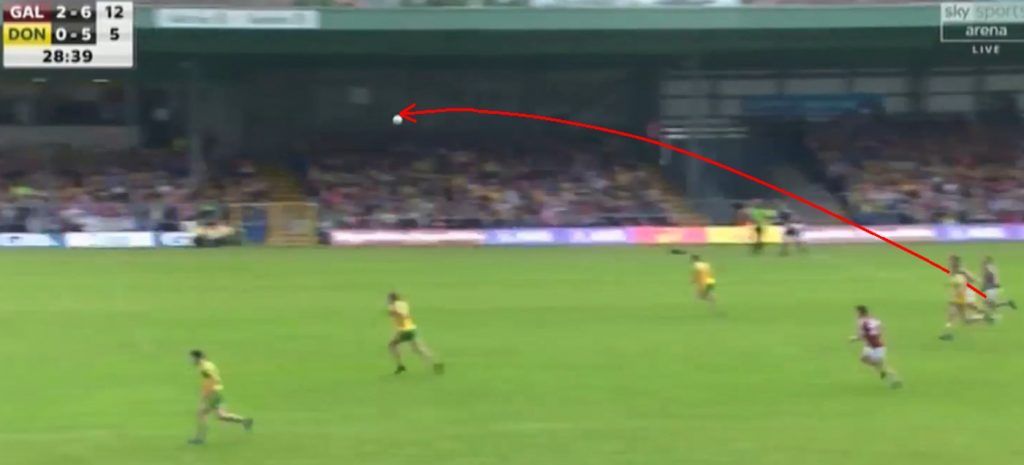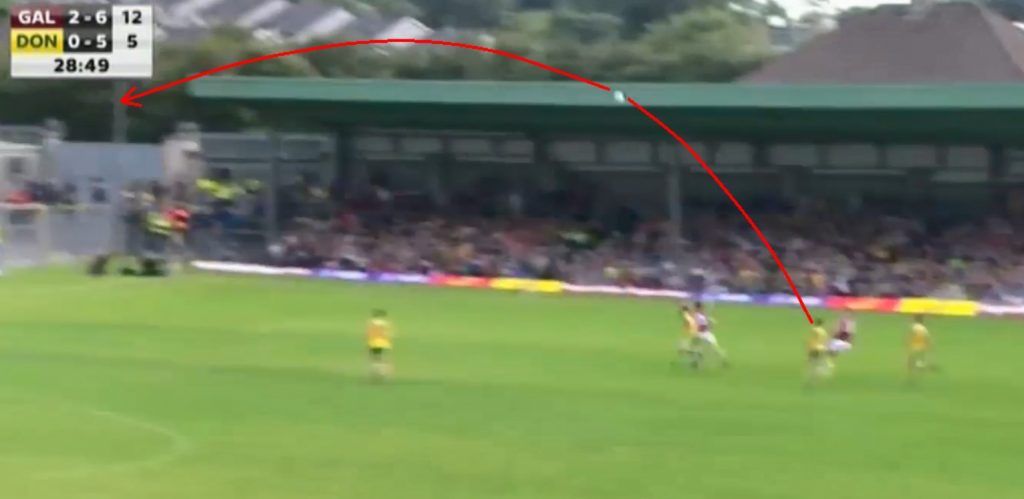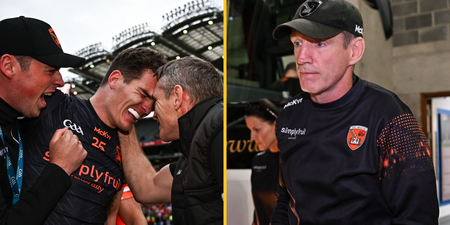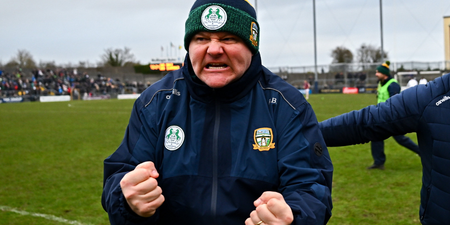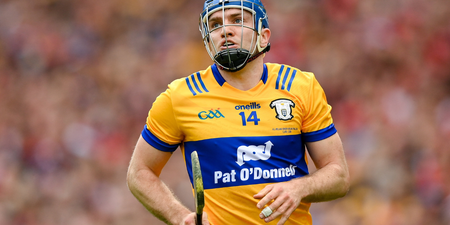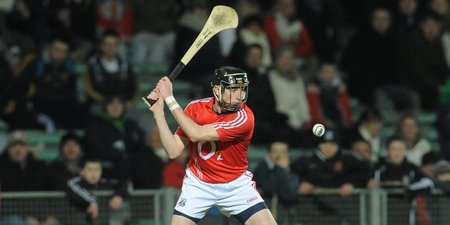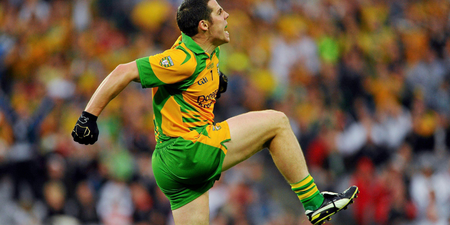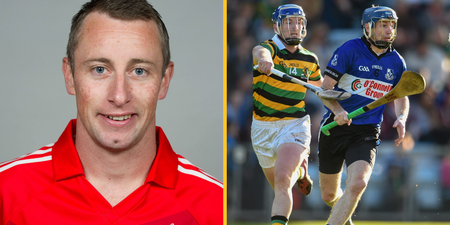In the end, all of the negative patterns which we pointed out from Donegal’s loss to Tyrone came back to haunt them, while Galway had made one significant tactical switch which eliminated their biggest problem against Roscommon, and turned it into the cornerstone of their victory.
The sides were tied at four points apiece on 13 minutes, and Donegal actually led by a point on the dot of 17. In just 20 minutes, however, Galway would take a 12-point lead in at half-time. Let’s look at just what happened in those 24 minutes from parity to see Galway go in at the break with a 12-point lead.
Galway’s Kick-outs
In our analysis of their Connacht final loss to Roscommon we had calculated that if Galway had gone long and hard on every kick-out as opposed to trying to go short, they could have expected to have come out of that game 1-3 better off. They had clearly taken note of this pattern.
In their 24-minute period of dominance, they didn’t try to hit the full back line once on a kick-out. They went wide to the half back line twice and went long and hard five times. In terms of both win/loss ratio and kick-out to score ratio, they ran riot.
From their five long kicks, they won four and lost one. They scored two goals and one point from these five long kick-outs. Damien Comer’s switch to the middle for kick-outs was key. He won or knocked the ball down for a teammate for all four.
Ironically, Donegal did their utmost to try to prevent the short Galway kick-out throughout. Galway made a good job of looking like they were trying to go to the full back line but it was hard not to get the impression that they were bluffing. None of their defenders really appeared to look for the short one with the same vigour as in the Connaught final.
McBrearty clearly looks to prevent the short, quick kick-out, obstructing the keeper
And runs back across him
And back again
But Galway are more interested in creating space than going short
So they can take out Donegal’s six forwards with one kick
And the middle third if they win the kick
With the space created, they also got two off out wide to Liam Silke. Though somewhat ropey in terms of what might have been had they lost these kick-outs, they also won both and scored 1-1 from them. Typically, kick-outs to the half back line are a statistical loser if they’re not hit quickly, and you can see why in the following image.
Had Galway lost this 50/50 ball they were in big trouble
But they won it and scored a point
You don’t need to go into statistical permutations to see how much value Galway would have lost had they gone short to the full-back line on kick-outs.
At the far end, Galway prevented Donegal from going short on more than three occasions during this period, forcing them long six times from nine. From those six, Galway won a huge five to one. Though they didn’t score from any of them, it meant that they prevented Donegal from getting their hands on the ball in the middle third before Galway could channel men back.
Credit to the Galway midfield, who came in for some criticism after losing slightly more than 50/50 long kick-outs against Roscommon. Damien Comer was involved in none of this 5/1 kick-out winning spree. They were won by the midfielders and half forwards.
Manner of Attacks
When Donegal lost to Tyrone, we had noted that the single biggest statistical difference was that Tyrone had taken on and beaten Donegal players man-on-man 17 times while Donegal had only taken on and beaten Tyrone men eight times.
More noteworthy was that only in the 75th minute did Donegal actually gain a score from going at Tyrone man-on-man while Tyrone had scored 1-9 in a similar fashion.
These figures were more or less replicated again during this key 20-minute period. During this time Donegal took on and beat a Galway man individually on four occasions while Galway took on and beat a Donegal man 10 times.
Once again, none of these four line breaks resulted in Donegal scores, although two did result in long range frees which were put wide. On the other hand, one of Galway’s goals and three of their points in this period came off the back of the scorer/man fouled for a scored free taking on his man directly and beating him.
Galway won the ball out wide
But Seán Armstrong beat his man
And created the goal
Pace of attacks
Yes, of course, Galway had more of the ball in this period with such superiority on long kick-outs, so they should have higher figures in the aforementioned regard, but there are two other figures which allude to a difference in mentality and/or raw ability.
Despite Donegal having less of the ball in this period, on eight occasions when they attacked, a player who was running towards goal but wasn’t under pressure turned backwards to pass the ball. Galway in the same period did this just four times.
The ability to know when and to be able to play “pick and poke football” has become key in the modern game, but these figures, once again, suggest Donegal were too keen to avoid attacking directly.
Typically, all things being equal, you can expect the side who get from defence to attack the fastest to win a game. It means they’re less likely to face a blanket defence.
In this 24-minute period, we’ve looked at how quickly the respective sides took the ball forward after gaining possession. We’ve taken a marker of when possession was gained to advancing 50 metres, crossing the half way line (where the ball was collected in the full back line) or having an attempt at goal.
Donegal’s average took 16.5 seconds. Galway’s average took 10.2 seconds. Whereas Donegal ran laterally more often than not, Galway frequently ran directly at Donegal when they took the ball.
Donegal are about to turn over possession
Galway get the ball with the clock reading 28.35
But they break forward quickly
One kick pass takes out the middle third and gains 50 yards in 4/5 seconds
And the point is kicked 14 seconds later
Noteworthy is that on Donegal’s two frees earned in this period, this figure read seven and eight seconds, while one of their two points came off the back of a quick kick-out.
Galway’s Shape
Apart from the manner in which Galway drove forward, their shape also helped significantly. A tactic which I suspect will become a staple element of the game in the coming years, they systematically kept three players up front. This gave them the “out” of a long kick whenever they did attack at pace, allowing them to take out the key area of the field, the middle third, frequently.
Conclusion
In Donegal’s defence, anything that could have gone wrong in this period did go wrong. They kicked two balls wide from play and two more from frees and coughed up soft possession for two of Galway’s goals.
Saying that Galway did miss another one-on-one and were a poor handpass short of creating another. So, all in all, they were more or less murdered for this 20-minute period.
For Donegal, it’s almost certainly the end of an era. Karl Lacey and Frank McGlynn, two of three key line-breakers when they beat Dublin in 2014 have clearly lost the pace that they had, and their departures will add to the plethora of All-Ireland winners and finalists now gone.
As for Galway, while there are certainly some potential issues, if they can apply a couple of key features to their game, like winning long kick-outs, they have the potential to beat anyone on their day. Apart maybe from Dublin.
Stephen O’Meara is the creator and owner of www.gaaprostats.com, statistical and video analysis software designed specifically for Gaelic football and hurling.

